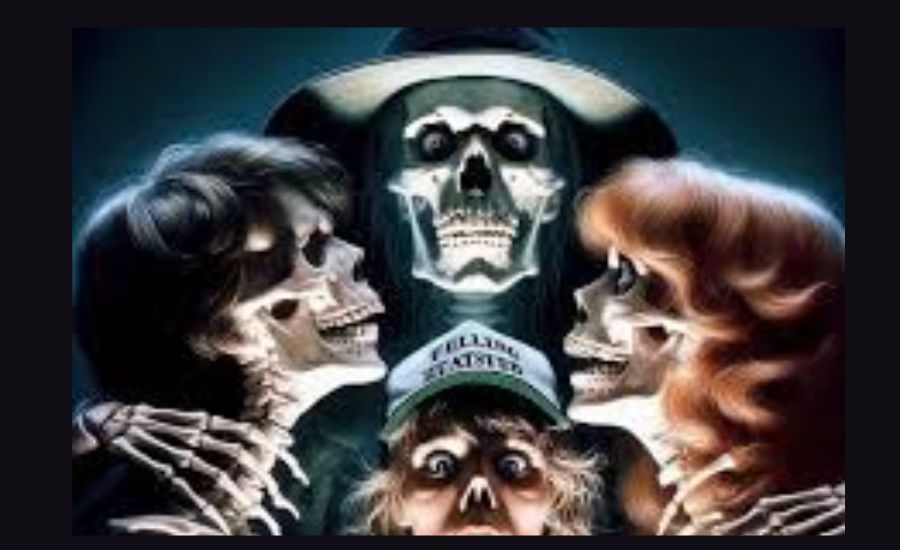Welcome to Streamest, your ultimate source for fascinating movie insights! Have you ever wondered about the dark secrets behind famous horror films? One of the most shocking revelations in cinematic history is that “The 1982 Movie Poltergeist Used Real Skeletons as – Tymoff”. This controversial fact has sparked debates and haunted the film industry for decades. In this blog post, we’ll uncover the truth behind this unsettling choice, exploring its origins, industry impact, and lingering myths. Let’s dive in!
The Hidden Truth Behind Poltergeist’s Terrifying Scene
The 1982 horror film Poltergeist, directed by Tobe Hooper and produced by Steven Spielberg, is remembered for its eerie storyline. But what truly horrifies fans is learning that “The 1982 Movie Poltergeist Used Real Skeletons as – Tymoff” during its infamous pool scene.
Why Real Skeletons?
The filmmakers opted for real skeletons because they were cheaper and more realistic than creating artificial props. This cost-effective choice, however, led to significant ethical concerns that remain debated today.
The Pool Scene Explained
Actress JoBeth Williams was filmed struggling in a muddy pool filled with skeletons. Unbeknownst to her, these skeletons were real, intensifying the fear seen in the movie.
The Shocking Public Reaction
The revelation that “The 1982 Movie Poltergeist Used Real Skeletons as – Tymoff” created waves of controversy. Fans, critics, and even cast members were shocked when the truth surfaced.
Fans’ Perspective
Horror movie fans were horrified but also intrigued. They felt that the use of real skeletons added authenticity but crossed ethical boundaries.
Cast and Crew Reactions
JoBeth Williams admitted feeling strange while filming the pool scene but only learned the skeletons were real after the shoot. Special effects artist Craig Reardon confirmed that real bones were used, justifying the decision as a cost-cutting measure.
The Ethical Debate: Was It Right or Wrong?

The ethical controversy surrounding “The 1982 Movie Poltergeist Used Real Skeletons as – Tymoff” is still discussed among filmmakers, legal experts, and fans.
Ethical Concerns
Using human remains for entertainment raised questions about respect for the dead. Many argued that even for art, such practices should be forbidden unless consent is granted.
Read More: Ibomma
Legal Implications
Modern laws strictly regulate the handling of human remains. If Poltergeist had been made today, the filmmakers might have faced legal consequences.
The Impact on the Film Industry
The decision to use real skeletons in Poltergeist led to changes in the entertainment industry’s standards.
New Industry Rules
Today, studios avoid using real human remains. Advancements in special effects technology, such as CGI, ensure ethical movie-making while maintaining realism.
Legacy in Horror Cinema
Despite the backlash, Poltergeist has become a cult classic, and its legacy as a boundary-pushing horror film endures.
Myth vs. Reality: The “Poltergeist Curse”
Many believe that “The 1982 Movie Poltergeist Used Real Skeletons as – Tymoff” caused the infamous Poltergeist Curse.
Tragic Deaths in the Cast
Several cast members died tragically, including Heather O’Rourke (Carol Anne) and Dominique Dunne (Dana). Fans linked these events to the supposed curse triggered by the disturbed skeletons.
Debunking the Curse
While eerie, experts attribute these tragedies to unfortunate coincidences rather than supernatural forces. Still, the belief in the Poltergeist Curse has become part of the film’s enduring legacy.
The Evolution of Horror Filmmaking
The Poltergeist controversy pushed Hollywood to adopt ethical filmmaking practices.
Special Effects Innovation
After Poltergeist, filmmakers increasingly relied on animatronics, prosthetics, and CGI for realism.
Modern Horror Ethics
Today’s filmmakers balance authenticity with ethical responsibility. Lessons learned from Poltergeist have helped shape a more conscientious movie industry.
Conclusion
The chilling reality that “The 1982 Movie Poltergeist Used Real Skeletons as – Tymoff” continues to fascinate and terrify audiences. While it added realism to the film, it also sparked critical conversations about ethics in filmmaking. As technology advances, such practices have become unnecessary, ensuring that future horror movies stay spooky while respecting human dignity.
FAQs
Q: Why did the filmmakers use real skeletons in Poltergeist?
A: They were cheaper and more realistic than fake props available at the time.
Q: Were the actors aware of the real skeletons during filming?
A: No, most cast members, including JoBeth Williams, found out only after filming ended.
Q: Is the Poltergeist movie cursed?
A: While many believe in the Poltergeist Curse, experts attribute cast tragedies to coincidences rather than supernatural forces.
Q: Are real skeletons still used in films today?
A: No, modern filmmakers use CGI and special effects to avoid ethical issues.
Q: What impact did Poltergeist have on the film industry?
A: It prompted stricter industry rules on using human remains and advanced special effects technology.
Read About Next: Tvwiki-barogogo-kr






